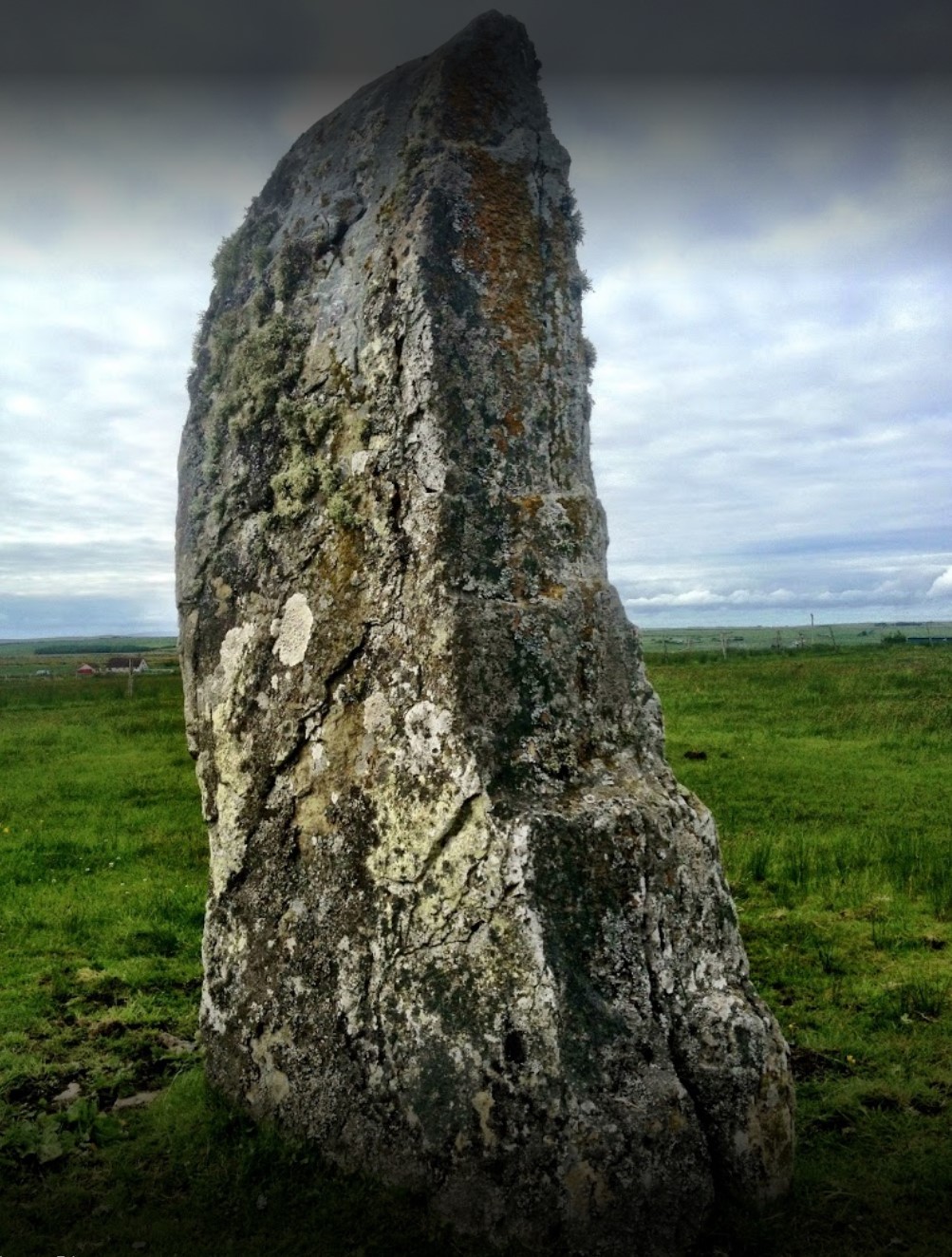Stone Lud on:
[Wikipedia]
[Google]
[Amazon]
 The Stone Lud is a
The Stone Lud is a
 The Stone Lud is a
The Stone Lud is a standing stone
A menhir (; from Brittonic languages: ''maen'' or ''men'', "stone" and ''hir'' or ''hîr'', "long"), standing stone, orthostat, or lith is a large upright rock (geology), stone, emplaced in the ground by humans, typically dating from the Eur ...
in the parish of Bower in Caithness
Caithness (; ; ) is a Shires of Scotland, historic county, registration county and Lieutenancy areas of Scotland, lieutenancy area of Scotland.
There are two towns, being Wick, Caithness, Wick, which was the county town, and Thurso. The count ...
, in the Highland
Highlands or uplands are areas of high elevation such as a mountainous region, elevated mountainous plateau or high hills. Generally, ''upland'' refers to a range of hills, typically from up to , while ''highland'' is usually reserved for range ...
area of Scotland
Scotland is a Countries of the United Kingdom, country that is part of the United Kingdom. It contains nearly one-third of the United Kingdom's land area, consisting of the northern part of the island of Great Britain and more than 790 adjac ...
. It is located and about south of Castletown.
The stone has been claimed as the grave stone of Ljot Thorfinnsson, the 10th century earl of Orkney
Earl of Orkney, historically Jarl of Orkney, is a title of nobility encompassing the archipelagoes of Orkney and Shetland, which comprise the Northern Isles of Scotland. Originally Scandinavian Scotland, founded by Norse invaders, the status ...
. At about from ground level, however, it seems rather taller than anything the 10th century Norse are likely to have used. It is one of the more impressive standing stones in Caithness and has mass and size to compare with those of the Ring of Brodgar
The Ring of Brodgar (or Brogar, or Ring o' Brodgar) is a Neolithic henge and stone circle about 6 miles north-east of Stromness on Mainland, the largest island in Orkney, Scotland. It is part of the UNESCO World Heritage Site known as the Heart ...
in Orkney. Also it is one of two stones, of which the second is now fallen, about from the first. When erect the second is supposed to have been behind the first as seen from the direction of the northern hemisphere
The Northern Hemisphere is the half of Earth that is north of the equator. For other planets in the Solar System, north is defined by humans as being in the same celestial sphere, celestial hemisphere relative to the invariable plane of the Solar ...
summer solstice
A solstice is the time when the Sun reaches its most northerly or southerly sun path, excursion relative to the celestial equator on the celestial sphere. Two solstices occur annually, around 20–22 June and 20–22 December. In many countries ...
sunset.
In '' The Standing Stones of Caithness'' (2003) Leslie J Myatt gives the alignment of the stones as 322 degrees, from the fallen stone to the still standing stone. This alignment may appear to suggest a summer solstice
The summer solstice or estival solstice occurs when one of Earth's poles has its maximum tilt toward the Sun. It happens twice yearly, once in each hemisphere ( Northern and Southern). The summer solstice is the day with the longest peri ...
sunset which is too far north for the latitude. However, at about , the altitude of the stones is quite high with respect to an Atlantic
The Atlantic Ocean is the second largest of the world's five oceanic divisions, with an area of about . It covers approximately 17% of Earth's surface and about 24% of its water surface area. During the Age of Discovery, it was known for se ...
horizon which is visible on this bearing. The sunset alignment differs from that of Maeshowe
Maeshowe (or Maes Howe; ) is a Neolithic chambered cairn and passage grave situated on Mainland Orkney, Scotland. It was probably built around . In the archaeology of Scotland, it gives its name to the Maeshowe type of chambered cairn, which ...
, a chambered cairn
A chambered cairn is a burial monument, usually constructed during the Neolithic, consisting of a sizeable (usually stone) chamber around and over which a cairn of stones was constructed. Some chambered cairns are also passage-graves. They are fo ...
in Orkney, which is built so that sunlight will penetrate the cairn at the time of the winter solstice sunset.
The name of Ljot is very close to that of Lot or Loth, the mythic King of Orkney and Lothian
Lothian (; ; ) is a region of the Scottish Lowlands, lying between the southern shore of the Firth of Forth and the Lammermuir Hills and the Moorfoot Hills. The principal settlement is the Scottish capital, Edinburgh, while other signific ...
in Arthurian legend
The Matter of Britain (; ; ; ) is the body of medieval literature and legendary material associated with Great Britain and Brittany and the legendary kings and heroes associated with it, particularly King Arthur. The 12th-century writer Geoffr ...
, and in ''Celtic Myths and Legends'' (1912), Charles Squire identifies Lot as a late incarnation of a British god who is remembered in medieval Welsh legend as Lludd Llaw Eraint.
(Gresham, ''Celtic Myths and Legends'', 1912, page 359 as republished by Paragon 1998, ) Modern scholars are more skeptical of this connection.
{{coord, 58, 32, 12, N, 03, 20, 10, W, region:GB_type:landmark, display=title
References